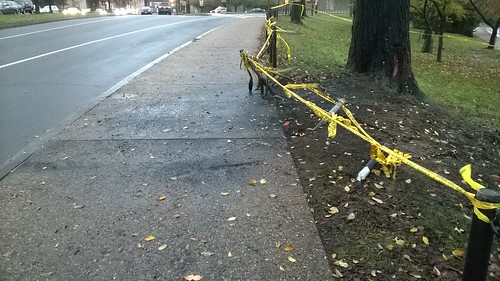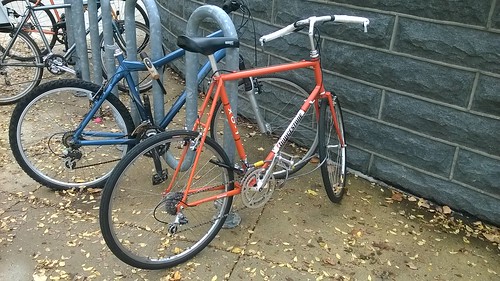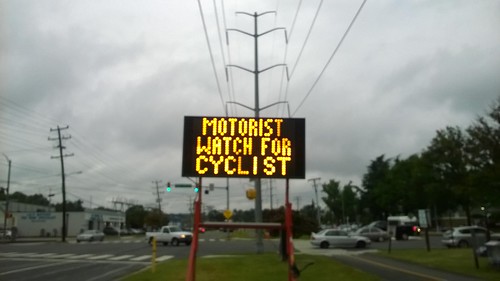The condition was remarkable - it was missing one pedal and also the seat post and saddle, but otherwise everything was there and worked. The bike was incredibly dirty, however, and with the missing seat and uninflated tires it looked pretty sad. The front of the bike frame is green and the back part is blue. This sort of paint scheme was common in the 1990s. A quick check suggested that little work would be necessary to make the bike ride-worthy. Put on some pedals and a seat post and saddle plus clean it up and off you go. The bottom bracket and headset both seemed fine and the derailleurs and brake systems appeared OK too.

Just purchased Trek Singletrack bike after some cleaning and refurbishing
I wasn't too sure about the age when I bought this but it seems to be a 1995 model, looking at a 1995 Trek catalog someone has helpfully digitized. This has one of the two color options offered that year; "dry ice green-dry ice blue fade."

A simple bike that will do what I want it to do (but at a more reasonable weight)
I had a CroMoly Giant mountain bike from one of my sons that has shocks on the front fork and is rather heavy - over 35 pounds. It hasn't aged very well, unlike this bike, so I wanted a replacement - ideally one that was lighter and without the (pointless) shocks in the front fork. This bike is just about exactly 30 pounds, which isn't too bad, although it too is CroMoly (steel) frame. Something that I can ride in snowy weather, to use with some studded mountain bike tires I already have mounted on an extra set of rims. This bike will work great for that. (I need to clean it up after such riding, though, to avoid components rusting.)
It is hard to know what to think of a used old(er) bike like this. It was extremely dirty and the rings and cogs showed some wear, but I'm guessing they were original. The wheels were original, in fact pretty much everything except the tires seems to have been part of the original bike. The 20 year old wheels were absolutely true, so even it was allowed to accumulate too much greasy dirt it wasn't abused. Nice that it all works well.
I had a seat post that works and an (ugly) saddle and some pedals, so I had little to do before taking it for a ride. I was pleasantly surprised that the tires and tubes hold air fine. I did a first pass at cleaning the worst of the dirt but I'm going to have to make another go at cleaning the thing.
60 bucks! Good deal!







